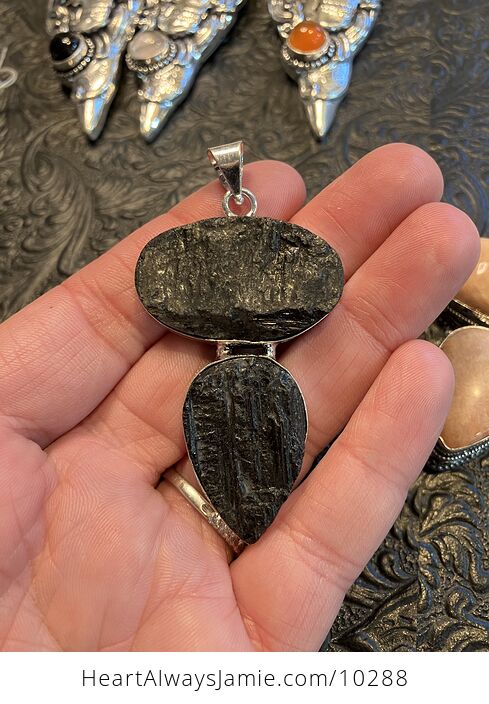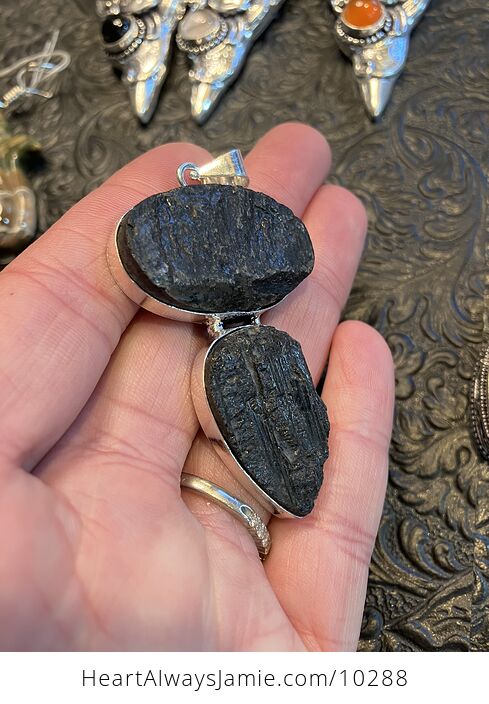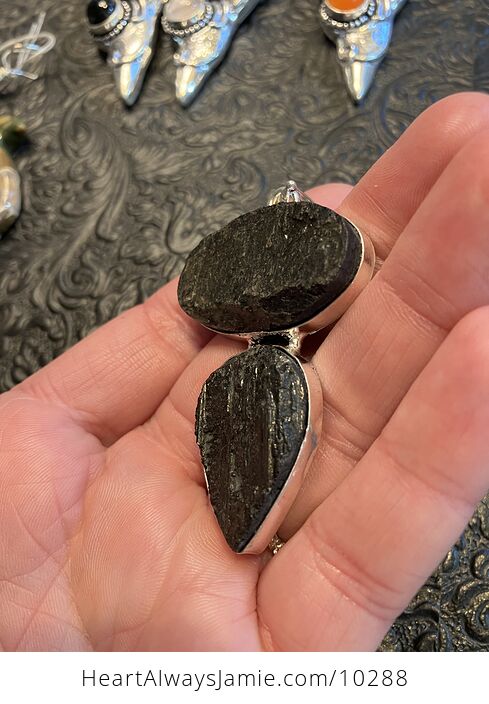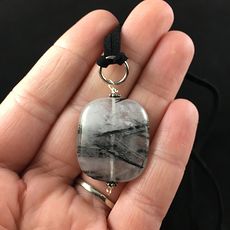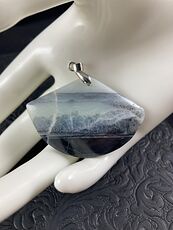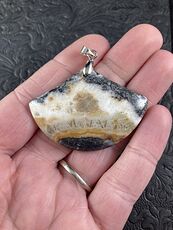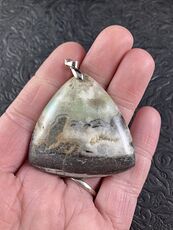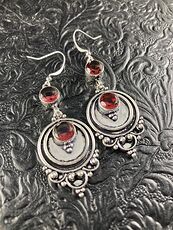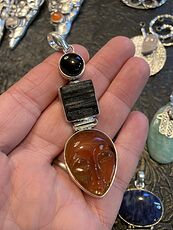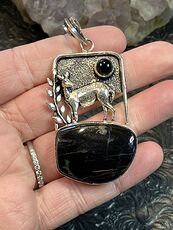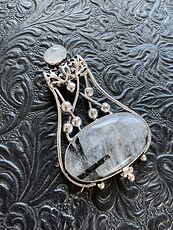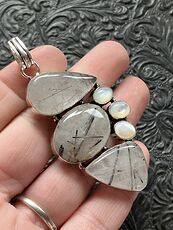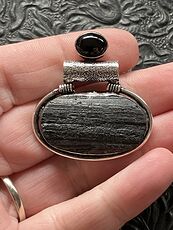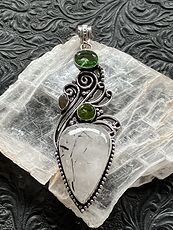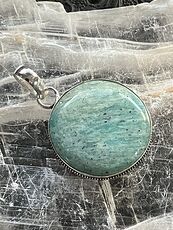Black Tourmaline Crystal Stone Jewelry Pendant
Reference id: HEy82XTR2Ow 10288
Pendant of a rough black tourmaline crystal stone in a silver plated setting.
Measures 2 5/8 inches tall, 1 3/8 inch wide.
History of Tourmaline
Tourmaline holds a special place in the hearts of jewelry designers and gemstone enthusiasts. All possible color combinations imaginable are embodied in this gemstone. It is believed that tourmaline is found in all these colors because it traveled along a rainbow and shone in all the rainbows colors.
Tourmaline was known for centuries by the name schrol, but the name tourmaline comes from the Sinhalese (Sri Lanka) words tura mali meaning "unknown gemstones of mixed colors." Colored tourmaline crystals would be grouped together in tura mali parcels in Sri Lanka and exported to Europe in the beginning of the 18th century.
Tourmalines worldwide popularity is based on two key facts:
- It is a bright and beautiful gemstone that can be found in so many colors.
- It is a high-quality material that is still affordable for use in jewelry designs.
Tourmaline is renowned as the gem of sensitive poets and creative artists. (Shakespeare even had a small collection of tourmaline jewelry to help him overcome writers block.) Tourmaline is believed to inspire creativity and was used extensively as a talisman by artists and writers from the Renaissance through the Victorian Age.
The rarest member of the tourmaline family is the pink tourmaline. In fact, it is even rarer than a ruby! The Empress Dowager Tzu-hsi (tzoo-she), the last Empress of China, adored and avidly collected pink tourmaline. During her lifetime, she bought nearly a ton of it from the Himalaya Mine in California, USA. When she died, she was laid to rest among all her jewels, and her head was set upon a prized pillow of carved pink tourmaline.
When heated or rubbed, tourmaline acquires an electric charge and attracts small objects like dust, ashes and other lightweight objects, much like amber. This phenomenon is called piezoelectricity (pay-zoh-electricity), and it is considered a unique property. The first documented record of piezoelectricity is in the early 18th century.
In addition to its use in jewelry, tourmaline has been employed in pressure devices because of its piezoelectric properties. It has been used in sonar apparatus and other devices that detect and measure variables of pressure, too.
Because of its electric charge capabilities, the demand for tourmaline increased during WWII for the production of pressure sensitive gauges for submarine sonar instrumentation as well as other war equipment that became significant.
Black tourmaline is said to expel negative energy. It is suggested to carry/wear this stone when you feel surrounded by negativity, and it is great for use in times of crisis or extreme stress. It will protect the wearer until they are strong enough in on their own power by breaking through old patterns and fears and cultivating inner wisdom, courage, stability and patience.
Caring for black tourmaline
Do not store tourmaline with harder gemstones or other materials that might rub against it and cause damage. As with all gems, protect tourmaline from scratches and sharp blows that could shatter it. Also, avoid large temperature changes that can cause the crystal to fracture (such as leaving it near a heater vent or in a hot car).
Do not clean tourmaline in a home ultrasonic cleaner! Tourmaline jewelry can be cleaned with a mild solution of gentle dishwashing detergent and water at home. Soak the stone for 10-20 minutes, then wipe gently but firmly with a wash towel.Similar tourmaline
Common questions
- For pendants pictured without a bail (the piece that goes into the drill hole so you can slide a chain through), I will make a wire bail. I will need to be able to reach you to see what color bail you want the wire in.
Please keep dry. Some crystals will dissolve if they get wet. A little sweat against the skin or a little rain (if you are out and about) will be fine, but please do not shower or swim with the pieces.

